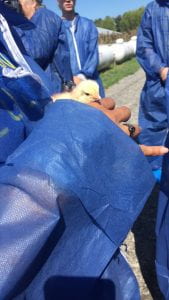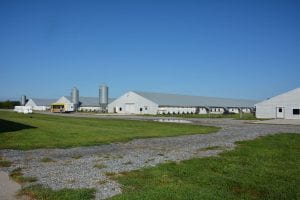Lately, it seems that the topic of raising the food that we eat organically has become a popular, but highly split discussion. Due to social media and its portrayal in the news, non-organic farming seems to be getting a bad rep. A decent amount of people feel that the organic farming is so drastically different than organic, that by in comparison the chickens are treated inhumanly. As an individual who has not grown up on a far, I have become very interested in finding out what the real difference between the two types of chicken raising. So when my Agriculture class took a field trip to Georgie Cartanza’s organic poultry farm on Saturday, August, 7th, I saw this as my chance to see for myself. Upon arrival at the farm, Mrs. Cartanza walked us through the specifics of poultry farming. Although there are many similarities between traditional and organic farms, such as how their buildings are set up, the main differences aren’t actually that important. Apparently Cartanza has been given certain restrictions and requirements by her bosses, such as requiring the chicks to have the option of spending a certain amount of time outside and providing them with toys (a bully box and a ramp) to play with. Another difference is that the chicks must be fed strictly feed that has never come in contact with either pesticides or antibiotics. This may seem like a chickens paradise, but according to Georgie Cartanza, some of these requirements don’t necessarily benefit the chicks. Being able to walk out in the open can actually expose the chicks to a great risk of avian diseases. All in all, the organic poultry farm was very enjoyable because I was able to to see it’s layout and interact with the day old chicks. From a personal viewpoint, it seems that organic poultry farming is just an alternative way of raising chicks, more so than being better than tradition poultry farming. This experience was very beneficial to my search for the truth of the depiction of Agriculture in the United States.


